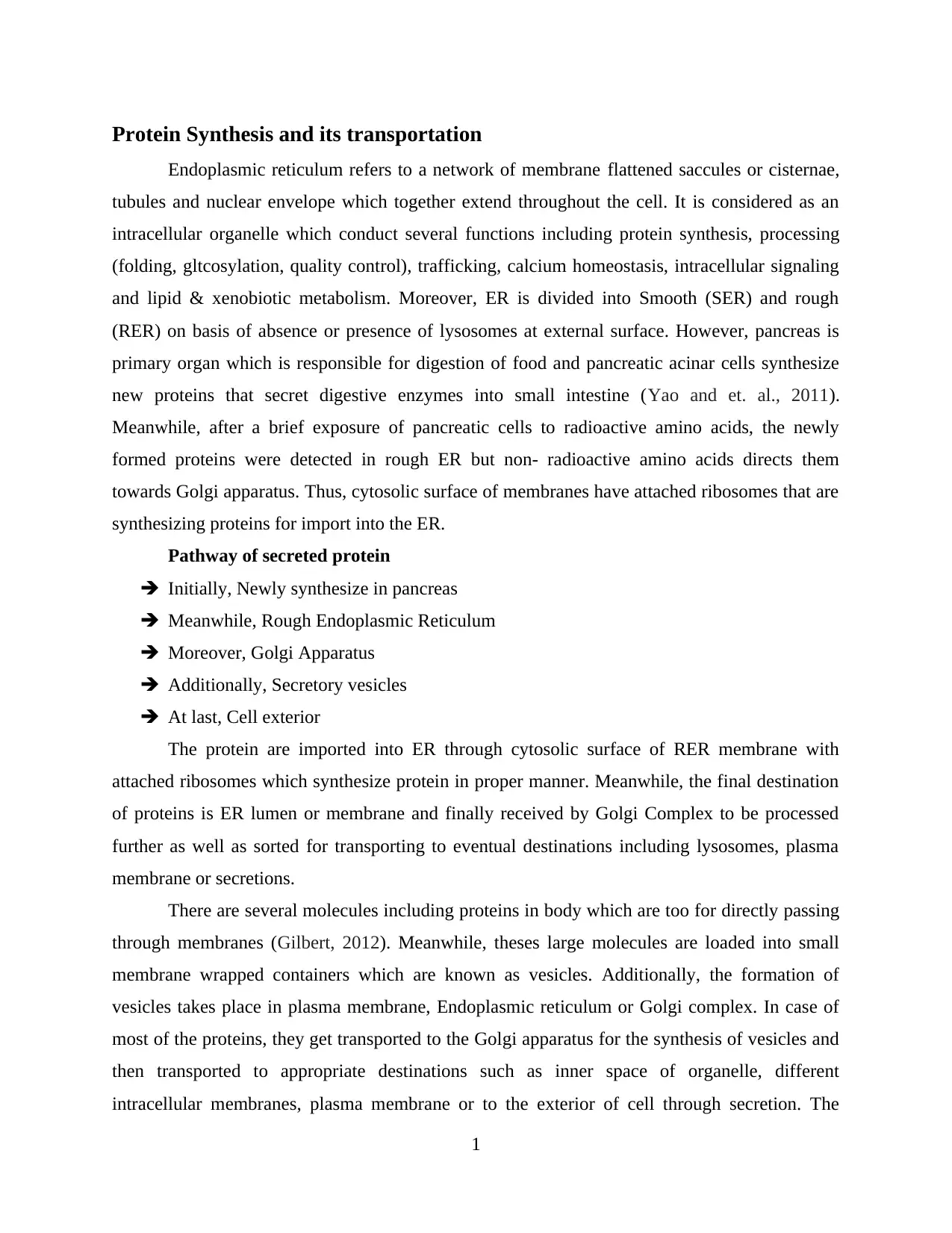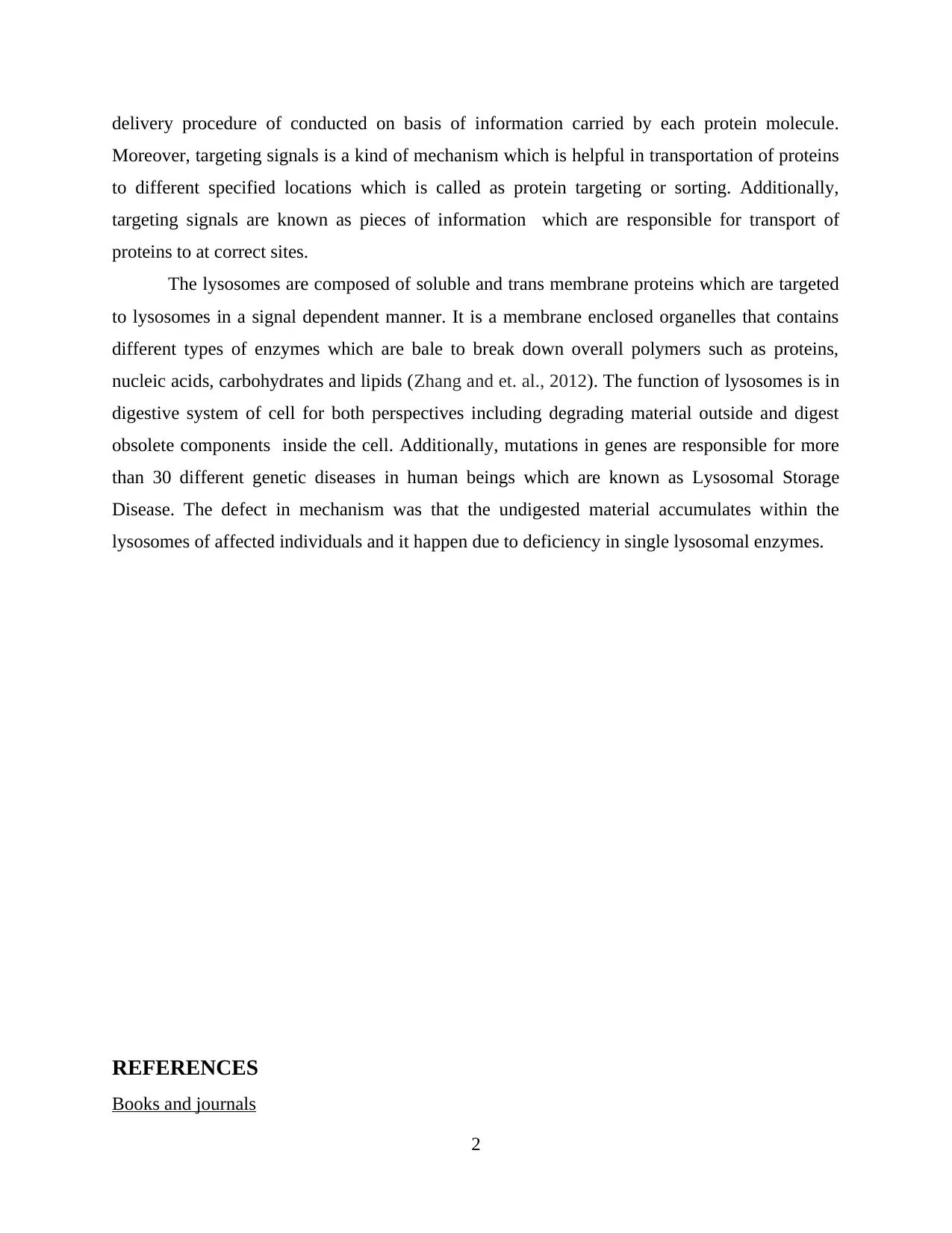Module 5 Assessment: Protein Synthesis and its Transportation
VerifiedAdded on 2020/11/12
|4
|696
|211
Homework Assignment
AI Summary
This assignment explores the process of protein synthesis and its subsequent transport within a cell. It begins by describing the endoplasmic reticulum (ER), differentiating between its smooth and rough forms, and highlighting its crucial role in protein synthesis, processing, and trafficking. The assignment then details the pathway of secreted proteins, starting from their synthesis in the pancreas and moving through the rough ER and Golgi apparatus before being secreted from the cell. The role of vesicles in transporting proteins is also explained. Furthermore, the assignment discusses the importance of targeting signals in directing proteins to their correct destinations, including the lysosomes. Finally, the assignment describes the function of lysosomes in cellular digestion and the consequences of lysosomal storage diseases. References to relevant research articles and books are also provided.
1 out of 4











![[object Object]](/_next/static/media/star-bottom.7253800d.svg)